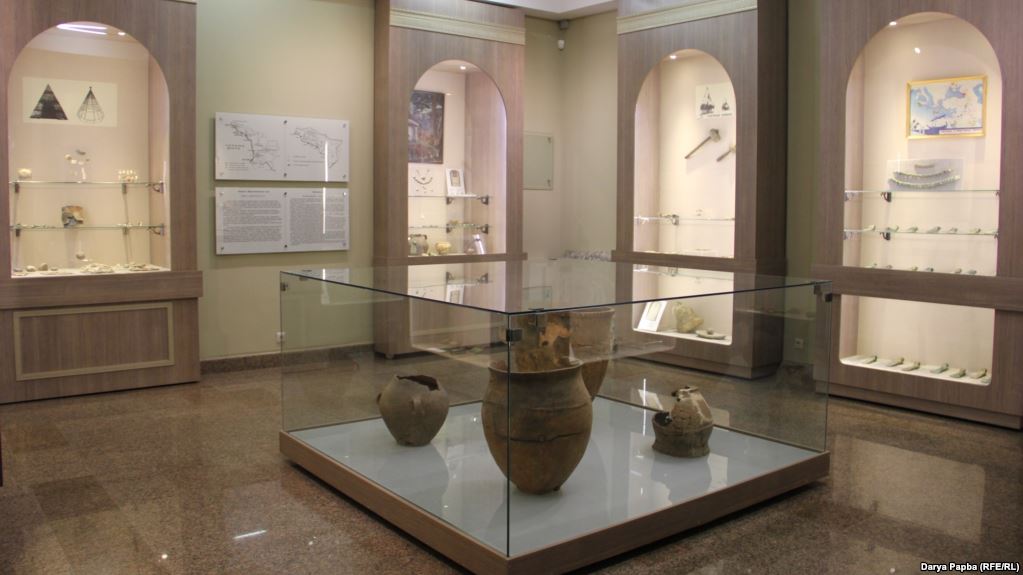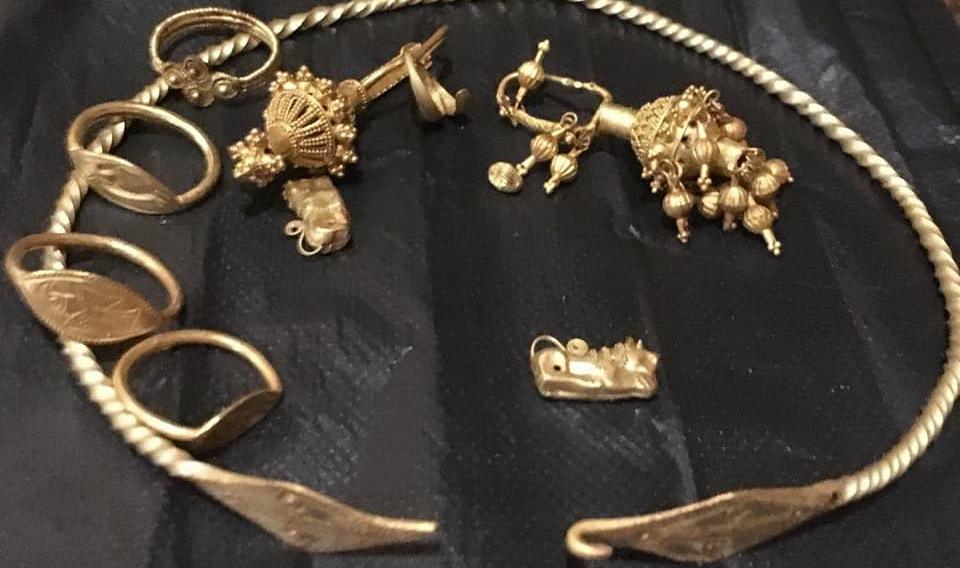Achandara’s ‘Schliemann’

It is already clear that the find in Achandara will be one of the most valuable exhibits in the Abkhazian State Museum
SUKHUM -- Abkhazian media and the Internet-community are actively discussing the news of the find in the village of Achandara (Gudauta District), namely a grave with jewels - one of the richest burials on the entire East coast of the Black Sea. And it was not archaeologists who discovered this burial (they usually leave for their expeditions in the summer), but inhabitant of the said village Rustam Chkhebelia, whom one of the media-outlets has already dubbed the "Abkhazian Schliemann". In the burial-site behind Chkhebelia’s house, eight gold ornaments were found, inter alia. And all this, for the time being, has been deposited with the National Bank of Abkhazia.
Director of the Abkhazian State Museum Arkadi Dzhopua said that he knows this middle-aged Achandaran well, because for several years he conducted archaeological excavations near his house. So we can say that Rustam has an idea of such excavations, but he stumbled upon a burial-site while planting trees in the garden. In the first media-reports, it was said that the artifacts found belong to the early Middle Ages or late antiquity, but then they were attributed to the V-IV centuries BC. So, first of all I asked the interlocutor to explain this discrepancy. Arkadi Dzhopua says:
"There is, of course, dateable material. The toy is a ritual decoration for a headdress, which dates back to the 5th-4th centuries BC. There is a helmet and military equipment, which are precisely dateable. The material we do not yet have to hand; it is stored in the National Bank. Why the confusion? The information was put out stating: ‘late antiquity, early Middle Ages’. The matter is that there different archaeologists were digging exactly at this place. The material we were investigating with Alexandr Yurevich Skakov in the early 2000s we dated to the 4th-6th centuries AD."

Of course, many citizens were interested in the presence of gold products lying there in the burial-site for two and a half thousand years. Still, as the old song says, "gold attracts us." The helmet found in Achandara is bronze. Well, what is the weight of the find’s gold-work? The museum director said:
"Speaking of gold alone ... I do not think there is much there. Well, how much can an earring weigh? Their value is not in the weight of gold, but as a work of art. This is a rich burial, of course; buried there was not just an ordinary soldier. I do not know yet. There is military equipment, warrior's armour and ornaments for women. We need to find out more...